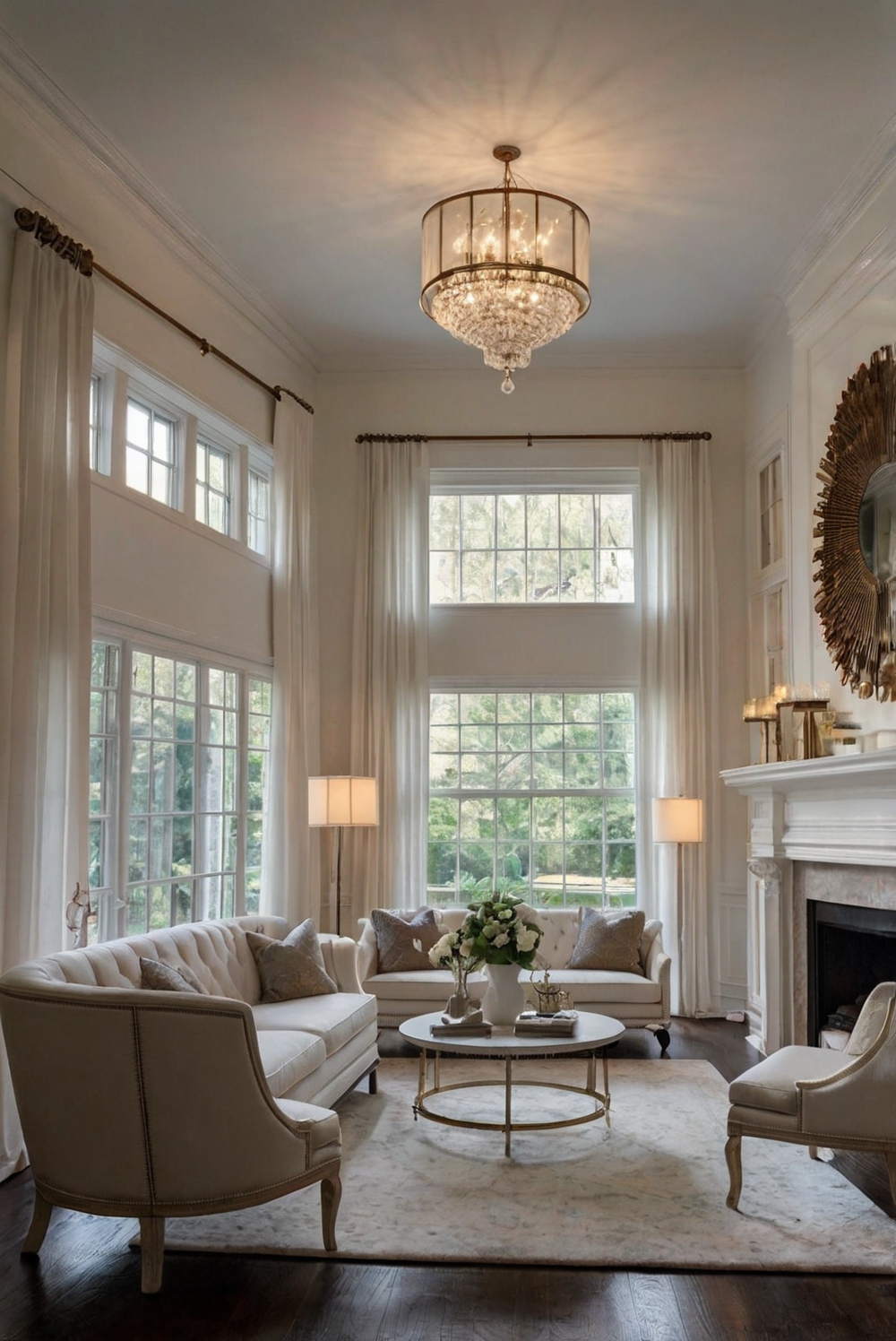Discover how to effectively use lighting as a focal point or highlight in your room with essential interior designer tips for a stunning daily routine.
To use lighting as a focal point or highlight in a room, you can follow these steps:
1. Determine the purpose of the lighting – whether it is for task lighting, ambient lighting, or accent lighting.
2. Choose the appropriate fixtures such as chandeliers, pendant lights, wall sconces, or track lighting to match the function.
3. Consider the placement of the lighting to create a balanced and visually appealing look in the room.
4. Use dimmers or smart lighting controls to adjust the intensity of the light as needed.
5. Select light bulbs that complement the overall decor scheme and color palette of the room.
6. Experiment with different lighting styles to find the perfect focal point that enhances the space’s aesthetics and functionality.
Using lighting strategically can transform a room, highlighting key features and adding depth. Proper lighting can also make a room feel more spacious and welcoming. However, be cautious of over-lighting as it can create harsh shadows and glare. Keep a balance between natural and artificial light sources to maintain a comfortable atmosphere. Invest in quality fixtures and bulbs for long-lasting and energy-efficient lighting solutions. Prioritize safety by ensuring that all electrical installations comply with regulations.
By incorporating these aspects into your home decorating, you can elevate the interior design and create a visually stunning space that reflects your personal style and enhances the functionality of each room.
1. Choose the Right Type of Lighting:
When using lighting as a focal point in a room, it is crucial to choose the right type of lighting that will best highlight the area you want to draw attention to. Consider using statement lighting fixtures such as chandeliers, pendant lights, or wall sconces. These types of lights not only provide adequate illumination but also serve as decorative elements in the room.
2. Experiment with Different Light Sources:
Another important aspect of using lighting as a focal point is to experiment with different light sources. Combine ambient, task, and accent lighting to create a layered and dynamic lighting scheme. Ambient lighting provides overall illumination, task lighting is focused on specific areas, and accent lighting highlights particular features or objects in the room.
3. Position Lighting Strategically:
Positioning your lighting fixtures strategically is key to making them stand out as focal points in the room. Place lights above or behind key furniture pieces, artwork, or architectural elements to create depth and visual interest. Consider using adjustable lights to direct the light where you want it and highlight specific areas.
4. Use Lighting to Create Mood:
Aside from serving as a focal point, lighting can also be used to create a specific mood or atmosphere in a room. Dimmer switches, color-changing bulbs, and smart lighting systems can help you adjust the lighting intensity and color temperature to suit different activities or occasions. For example, warm lighting can create a cozy and intimate setting, while cool lighting can make a space feel more energetic and vibrant.
5. Consider the Scale and Proportion:
When using lighting as a focal point, it is essential to consider the scale and proportion of the fixtures in relation to the size of the room and other elements within it. Oversized lighting fixtures can overwhelm a small space, while undersized fixtures may get lost in a larger room. Choose fixtures that complement the scale of the room and add visual interest without overpowering the space.
In conclusion, using lighting as a focal point or highlight in a room can significantly enhance its aesthetics and functionality. By selecting the right type of lighting, experimenting with different light sources, positioning the fixtures strategically, creating mood through lighting, and considering scale and proportion, you can effectively draw attention to specific areas and create a dynamic and visually appealing space.

